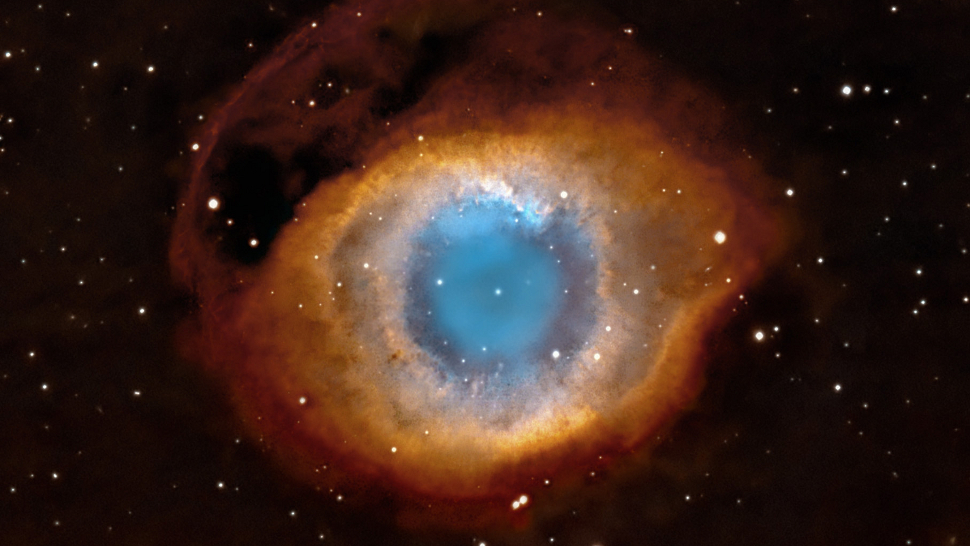The Famous “Eye of God” Nebula May Actually Be Weeping Tears Of Water
This article is George Dvorsky 6/17/14 filed to: SPACE. It was directly copied onJuly 12, 2018 from the following site:
https://io9.gizmodo.com/the-famous-eye-of-god-nebula-may-actually-be-weeping-1592005991

It’s one of the most iconic celestial images in astronomy — the eye-like Helix Nebula. Ironically, the incredibly harsh conditions within this dying Sun-like star are producing a molecule integral for the formation of water, a process that could be repeated across the cosmos.
Planetary nebulas consist of an expanding glowing shell of ionized gas ejected from old red giant stars late in their lives. The core becomes a hot white dwarf pouring out ultraviolet radiation into its surroundings. This radiation can be so intense that it can actually destroy molecules that have been thrown out by the star — molecules bound up in the rings of material seen at the outer edge of planetary nebulas.
Water-building molecule in Helix Nebula (Hubble image: NASA/ESA/C. Robert O’Dell (Vanderbilt University) Herschel data: ESA/Herschel/PACS & SPIRE/ HerPlaNS survey/I. Aleman et al.)
A separate study by Mireya Etxaluze of the Instituto de Ciencia de los Materiales de Madrid, Spain, focused on the Helix Nebula — one of the nearest planetary nebulas to our Solar System, a distance of 700 light years.
This nebula, which burns at 120,000 degrees Celsius, contains a rich variety of molecules. Looking at Herschel data, Etxaluze’s team found OH+ in locations where carbon monoxide molecules, previously ejected by the star, are most likely to be annihilated by the strong UV radiation.
Once oxygen atoms are free from the carbon monoxide, they’re able to make the oxygen-hydrogen molecules — a process that bolsters the hypothesis that UV radiation promotes their creation.
These studies are the first to show how planetary nebulas may seed the cosmos with OH+, but the astronomers have yet to show that the conditions within would actually allow water formation to proceed.
Read the studies: “Herschel planetary nebula survey (HerPlaNS). First detection of OH+ in planetary nebulae,” by I. Aleman et al., and “Herschel spectral-mapping of the Helix Nebula (NGC 7293): extended CO photodissociation and OH+ emission,” by M. Etxaluze et al., are published in Astronomy & Astrophysics. Supplementary source: ESA.
======================================================General Comment====================================================================
The studies he referred to above are beyond my lay understanding; There is a book called “An Introduction to Planetary Nebulae” by Jason J. Nishiyama, but was not in my library’s and it’s table of contents suggests it might still be too detailed.
Jason J. Nishiyama does share that the first planetary nebula was discovered in 1764 and Charles Messier was unaware of the nature of this object beyond it being a fuzzy cloud in his telescope. He listed it as a nebula. . Any fuzzy object that could not be resolved into stars were called nebula. It was in the 1950’s and after that understanding grew. In 1963 Robert O’Dell argued that observations showed the central stars were rapidly increasing in temperature but also rapidly decreasing in mass.